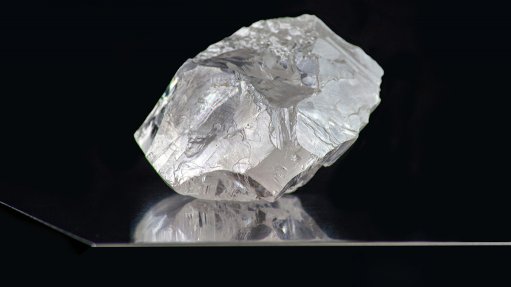Russia-Ukraine conflict creates uncertainty for high-grade nickel supply
The Russia-Ukraine conflict has created uncertainty over global supply of mined nickel – particularly high-grade nickel, which is used as battery-grade nickel in the electric vehicle (EV) industry – market research firm Fitch Solutions Country Risk and Industry Research (Fitch Solutions) said in its ‘Global Nickel Outlook’ report on July 8.
To illustrate the impact, last year, Russian mining company Norilsk Nickel alone provided about 17% of the global supply of class one nickel. In total, Russia accounts for about 21% of global class one nickel production, followed by Canada at 17%, Australia at 14% and China 10%.
While nickel is the fifth most common element on earth and is currently mined in more than 25 countries, higher-grade sulphide deposits located in well-established mining regions have mostly been depleted, necessitating additional exploration in new and riskier jurisdictions.
However, Fitch Solutions said that, aside from the uncertainty surrounding Russia, high prices for refined nickel and reduced disruption from the Covid-19 pandemic would likely result in strong nickel mine production growth this year and next.
The most significant driver of this growth would be a recovery in production from Indonesia and the Philippines, where mining activities had been heavily restricted by Covid-19 in 2020 and 2021.
Output in Indonesia was particularly impacted last year as a record number of Covid-19 cases resulted in renewed lockdown restrictions in the country, Fitch Solutions said.
The firm forecast global nickel mine production to grow by a yearly average rate of 3.1% up to 2026, before accelerating to an average of 5% up to 2031.
Nevertheless, Fitch Solutions said both growth rates would be slower than the 6.6% year-on-year average achieved from 2010 to 2019, which was boosted by higher nickel prices at the time and strong Indonesian output growth.
The firm also said it expected global yearly nickel production to reach 3.65-million tonnes by 2031, up from the 2.46-million tonnes produced in 2021.
“With battery-grade class one nickel to experience a major demand boost from the green transition, the main supply risk and impediment facing battery players is sufficient class one supply,” Fitch Solutions said.
Meanwhile, the main potential “game-changer”, it said, was the successful conversion of class two nickel – which is lower-quality nickel with less than 99.8% nickel content – to class one nickel.
However, this process, while promising, remains technically and environmentally challenging, which Fitch Solutions said suggested a tightened supply of battery-grade nickel over the next two to three years – at a time when EV sales are expected to boom.
Supply of non-battery-grade nickel, on the other hand, would remain ample.
The firm said Australia and Indonesia would remain the world's largest suppliers of nickel. However, Australia would outpace Indonesia with its endowment of higher-grade sulphide ores of class one quality, whereas Indonesia had plans to catch up by trying to convert its class two nickel ores into class one.
The firm also highlighted Canada as having significant high-grade nickel opportunity, boasting significant resources of higher-quality sulphide ore. The Canadian nickel industry also enjoys better sustainability records and lower emissions than its competitors.
Overall, Fitch Solutions indicated that high nickel prices and the disrupted flow of mined nickel from Russia would boost investment into nickel mining in other markets, including Indonesia, the Philippines and Australia.
This would lead to strong growth in nickel ore production this year and next from Indonesia and Philippines in particular.
However, the firm said the most fragile part of the global nickel mine supply pipeline – outside of Russia – was in Indonesia, where any delays to the development of downstream nickel processing facilities could result in stranded nickel ore in the country, reducing the incentive for miners to boost output.
Moreover, Indonesia would also need to overcome technological challenges involved in cost-effectively converting ample supplies of class two nickel ore into battery-grade class one nickel.
Comments
Press Office
Announcements
What's On
Subscribe to improve your user experience...
Option 1 (equivalent of R125 a month):
Receive a weekly copy of Creamer Media's Engineering News & Mining Weekly magazine
(print copy for those in South Africa and e-magazine for those outside of South Africa)
Receive daily email newsletters
Access to full search results
Access archive of magazine back copies
Access to Projects in Progress
Access to ONE Research Report of your choice in PDF format
Option 2 (equivalent of R375 a month):
All benefits from Option 1
PLUS
Access to Creamer Media's Research Channel Africa for ALL Research Reports, in PDF format, on various industrial and mining sectors
including Electricity; Water; Energy Transition; Hydrogen; Roads, Rail and Ports; Coal; Gold; Platinum; Battery Metals; etc.
Already a subscriber?
Forgotten your password?
Receive weekly copy of Creamer Media's Engineering News & Mining Weekly magazine (print copy for those in South Africa and e-magazine for those outside of South Africa)
➕
Recieve daily email newsletters
➕
Access to full search results
➕
Access archive of magazine back copies
➕
Access to Projects in Progress
➕
Access to ONE Research Report of your choice in PDF format
RESEARCH CHANNEL AFRICA
R4500 (equivalent of R375 a month)
SUBSCRIBEAll benefits from Option 1
➕
Access to Creamer Media's Research Channel Africa for ALL Research Reports on various industrial and mining sectors, in PDF format, including on:
Electricity
➕
Water
➕
Energy Transition
➕
Hydrogen
➕
Roads, Rail and Ports
➕
Coal
➕
Gold
➕
Platinum
➕
Battery Metals
➕
etc.
Receive all benefits from Option 1 or Option 2 delivered to numerous people at your company
➕
Multiple User names and Passwords for simultaneous log-ins
➕
Intranet integration access to all in your organisation


















